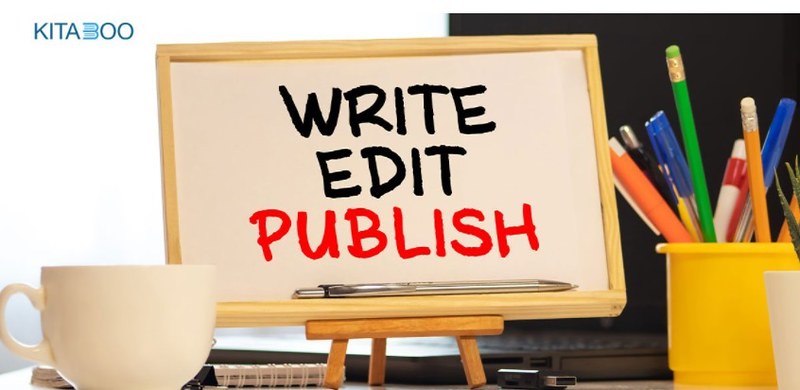Contents
- 1
- 2 What No One Tells You About Becoming an Indie Author
- 3 Lie #1: “If You Write It, They Will Come”
- 4 Lie #2: “Anyone Can Make Passive Income With Kindle Publishing”
- 5 Lie #3: “Your Book Will Market Itself If It’s Good Enough”
- 6 Lie #4: “You Don’t Need a Niche—Just Write What You Love”
- 7 Lie #5: “You Can Do It All Yourself for Free”
- 8 Lie #6: “Once You Publish, The Hard Part is Over”
- 9 Lie #7: “The Money Is in Fiction”
- 10 Lie #8: “All You Need Is One Great Book”
- 11 Lie #9: “You Can Fake It Until You Make It”
- 12 Lie #10: “Self-Publishing is a Last Resort”
- 13 Final Thoughts: The Truth Will Set You Free—But First It Might Piss You Off
- 14 Related Articles

What No One Tells You About Becoming an Indie Author
Exposing the Myths That Keep Writers Broke, Confused, and Disappointed
Keywords: self-publishing lies, indie author myths, self-publishing truth, publishing scams, Kindle Direct Publishing lies, self-publishing expectations vs reality, make money with self-publishing, truth about indie publishing
Let’s be honest: self-publishing is sold as a dream—freedom, fame, passive income, and creative control. You’ve seen the YouTube ads, blog posts, and courses that promise you can “write a book this weekend and earn $10,000 a month from Kindle royalties.”
Sounds good, right?
Here’s the problem: most of it is a lie.
If you’ve jumped into self-publishing expecting overnight success, you’ve probably already hit the wall of reality. Or maybe you’re standing on the edge, wondering whether to leap.
This post is for you.
Let’s rip off the sugar-coated cover and expose the real self-publishing lies—and what you need to know if you want to succeed as an indie author.
Lie #1: “If You Write It, They Will Come”
This might be the most damaging myth in all of self-publishing.
You pour your soul into your book, click publish, and wait for the money to roll in. Days pass. Then weeks. Crickets.
The truth?
Nobody is coming—unless you bring them.
Self-publishing without marketing is like putting a flyer on a tree in the middle of a forest. It might be beautiful, but no one’s going to see it.
Reality check: Publishing is 20% writing and 80% marketing. You need to know how to get eyeballs on your book—through SEO, email lists, social media, Amazon ads, and collaboration with bloggers and influencers.
Lie #2: “Anyone Can Make Passive Income With Kindle Publishing”
Technically true—but deliberately misleading.
Yes, you can make passive income with Kindle books, but only if:
- You write in a niche with buyer intent
- You publish consistently
- You understand Amazon’s algorithm
- You do solid keyword and category research
- You have a plan for long-term visibility
Most beginners don’t do any of that. They publish a single book in an oversaturated niche (usually self-help or fiction) and then wonder why sales flatline after launch week.
Passive income? Yes. But only after a ton of active work.
Lie #3: “Your Book Will Market Itself If It’s Good Enough”
This lie is rooted in the old publishing world, where authors were “discovered” and books rose to fame purely on merit.
In today’s indie publishing world? Merit doesn’t sell—marketing does.
There are hundreds of thousands of excellent books on Amazon collecting digital dust. If your book doesn’t:
- Solve a specific problem
- Target a defined audience
- Use keywords that people actually search
- Have a professional-looking cover and blurb
…it doesn’t matter how good it is. No one will read it. Because no one will find it.
Lie #4: “You Don’t Need a Niche—Just Write What You Love”
This one gets writers in trouble.
Yes, you should write what you love. But if you want to sell, you need to meet your audience where they already are.
Self-publishing success comes from writing to market:
- Romance authors pick sub-genres like billionaire, age-gap, or clean & wholesome
- Nonfiction authors target specific pain points: anxiety, productivity, digital nomadism
- Children’s book authors cater to age groups and parents’ buying habits
If your book is for “everyone,” it’s for no one. Successful indie authors niche down and serve deeply.
Lie #5: “You Can Do It All Yourself for Free”
Technically you can… but it will cost you in the long run.
You can:
- Design your own cover (and it will look like it)
- Edit your own manuscript (and miss the mistakes)
- Format your own files (and watch them break on Kindle)
- Write your own blurb (and bore your readers)
If you’re writing a journal or personal memoir for friends and family, DIY is fine.
But if you’re building a brand, you’ll need to invest in:
- A professional cover
- A proper editor or proofreader
- Clean formatting
- Keyword-optimized book descriptions
Self-publishing is a business. Treat it like one.
Lie #6: “Once You Publish, The Hard Part is Over”
Nope. Publishing is just the beginning.
The real work begins after you hit “publish”:
- Launching the book
- Getting reviews
- Optimizing your Amazon page
- Promoting to your email list and blog readers
- Updating content or covers as markets shift
- Publishing the next book to keep momentum
The authors who succeed long-term treat self-publishing like an ongoing journey, not a one-and-done event.
Lie #7: “The Money Is in Fiction”
It can be—but only for those who:
- Publish in high-demand genres
- Write fast and publish often
- Master tropes, character arcs, and reader expectations
- Build loyal audiences
Most fiction authors don’t realize that without a series, a publishing schedule, and reader magnet strategies, fiction can be the hardest way to make money in self-publishing.
Nonfiction, on the other hand, often converts better:
- It’s searchable (SEO works)
- Readers buy based on need, not entertainment
- You can tie in affiliate products, coaching, and courses
Lie #8: “All You Need Is One Great Book”
This is the lie that keeps people stuck forever on their first book.
The truth? Self-publishing is a volume game.
Successful indie authors build catalogs:
- 3–5 books minimum
- Series, sequels, or niche clusters
- Back-end offers like email lists and digital products
Your first book is just the doorway. You build your audience, authority, and income over time—book by book.
Lie #9: “You Can Fake It Until You Make It”
There’s a lot of hype in the publishing world—people with rented Lambos, fake screenshots of royalty earnings, and low-content book sellers promising overnight riches.
Don’t fall for it.
Real success in self-publishing comes from:
- Authenticity
- Discipline
- Writing for your audience
- Long-term thinking
You can’t fake value. Your readers know the difference.
Lie #10: “Self-Publishing is a Last Resort”
This one’s outdated—and flat-out wrong.
Ten years ago, self-publishing was the Plan B after rejection letters. Now? It’s the Plan A for smart, strategic creators who want full control, higher royalties, and faster paths to audience building.
Indie authors now:
- Out-earn many traditionally published peers
- Keep up to 70% of their royalties
- Control their content, cover, and pricing
- Retain the ability to turn books into courses, podcasts, or speaking opportunities
Self-publishing isn’t second-rate—it’s a revolution.
Final Thoughts: The Truth Will Set You Free—But First It Might Piss You Off
Self-publishing is not easy. It’s not quick. And it’s definitely not “set it and forget it.”
But it is powerful.
It’s liberating.
It’s a path for writers, teachers, healers, and thinkers to own their voice, reach their people, and earn income on their own terms.
You just need to see through the lies—and commit to the work.
Because while self-publishing success isn’t guaranteed…
it is absolutely possible.
? Want to Publish Smarter?
Subscribe to our free newsletter for:
- Proven book marketing tips
- SEO and keyword tools for KDP
- Behind-the-scenes lessons from real self-publishing experiences
- Book launch checklists and writing hacks







